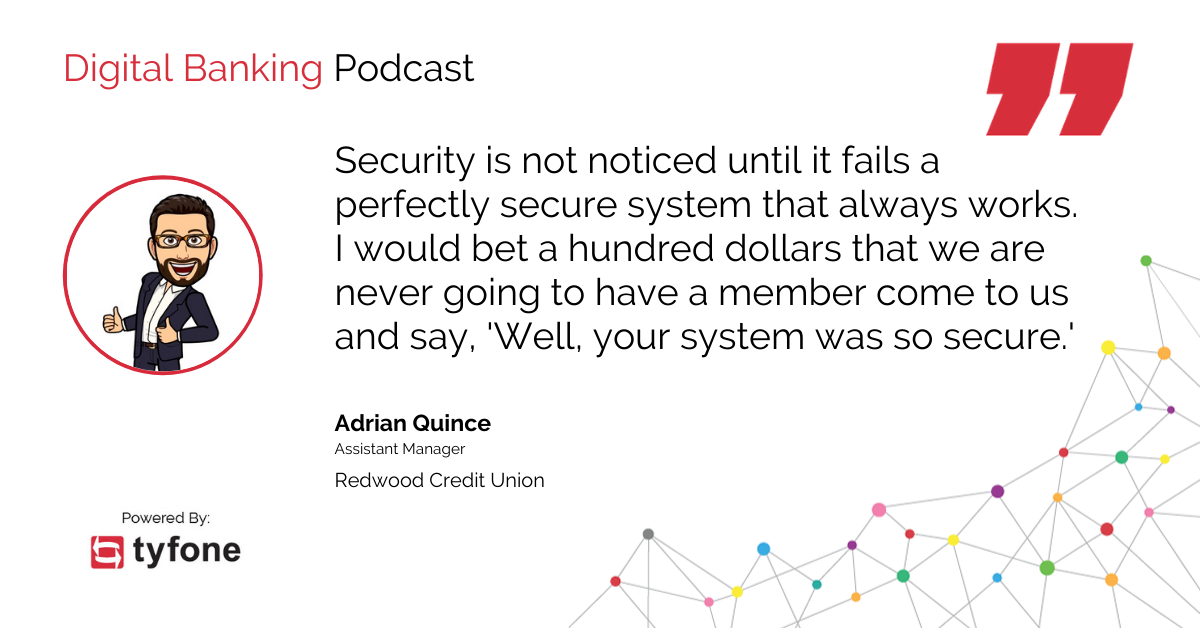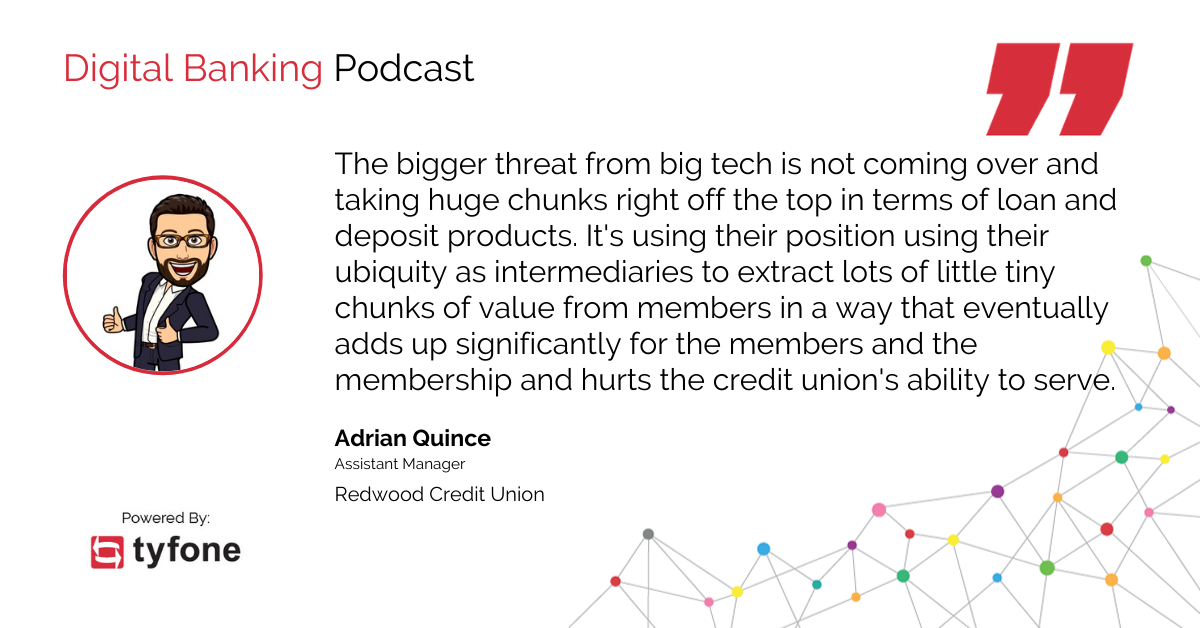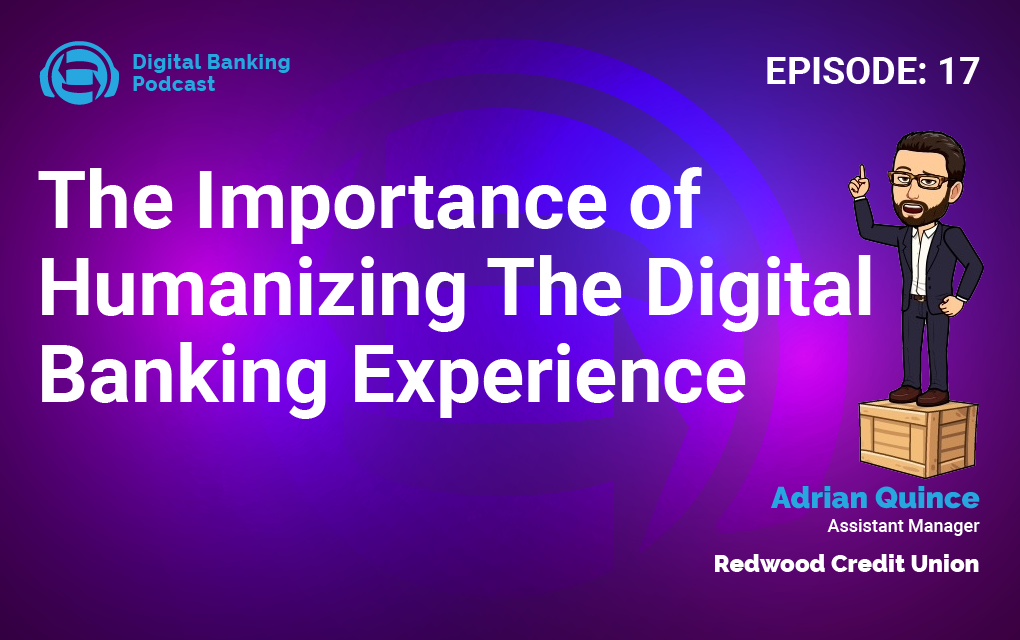The Future of the Digital Banking Experience

Adrian Quince
Assistant Manager
- Unlike other financial institutions, credit unions are known for being consumer-oriented and putting their members first.
- We shouldn’t have to choose between convenience and security in digital banking. It’s up to the financial institutions to put both in place and provide a seamless experience to their members.
- You have to have good user data, but what you do with it is equally important. Until it’s put into action, data is useless.
It’s a known fact that credit unions exist to serve their members. As the members’ needs and expectations evolve, so should credit unions’ offerings.
Technology plays a significant role in the financial industry nowadays. From online to mobile banking, everything is focused on delivering exceptional user experiences. However, no matter how good your banking platform is, the bar is set by giant tech players such as Amazon, Facebook, and Google. So what can credit unions do to stay relevant? Podcast guest Adrian Quince reflects on this critical question: How do we stay competitive in a market where the companies that we rely on to get our digital services to our members are also now our competitors?
Our host Josh DeTar introduces Adrian to discuss the future of the digital banking experience. Adrian is Assistant Manager at Redwood Credit Union, a trusted and community-focused credit union that offers banking services to consumers and small business owners. Around four years ago, Adrian joined RCU as a programmer, in charge of developing online and mobile banking. He’s recently become an assistant manager, responsible for driving strategic change.
In the latest episode of the Digital Banking Podcast, Adrian and Josh touch upon some of the most important topics in fintech. They discuss the power of credit unions, big data, and the importance of humanizing the digital banking experience.

Personalized customer experience is one of the many benefits of credit union membership
Credit unions are owned by their members, unlike banks and other financial institutions. When you open an account in a credit union of your choosing, you become one of its member-owners.
That’s why member service representatives in credit unions tend to go above and beyond for their members. Adrian shares his personal experience with the local Redwood Credit Union branch and reveals what drew him to join it as an employee later on. He describes the experience as “one of the best customer service experiences I had ever had anywhere.”
“The way that the member service rep, her name was Courtney, the way that she was able to, instead of thinking in a product-way, think about the whole member, think about the whole person and the whole financial picture.
“It was an incredible experience and changed my outlook on finances and got me to believe early on in the power of credit unions. And then, a few years later, I heard through a friend that Redwood was hiring, put my application in, and was lucky enough to get hired. So already came in the front door with an understanding of the power of credit unions to help people in the community.”

The rise of fintech: How to humanize the digital banking experience
Credit unions should also aim to humanize the digital banking experience. Instead of being narrowly focused on which products people want, FIs should think about their end goals. What are they trying to achieve? What is going well for them and what is not?
Rather than being product-focused, credit unions are member-focused. The digital banking experience should be the same.
Adrian says that most members come to their digital banking app with a clear objective in mind. The bigger question is, how do you get them to open up to new possibilities?
“That’s the first step in what that consultative experience looks like. How do you get the member focused on possibilities other than what they came to digital banking to do?
“If the front of your sales funnel is product-focused, they’re not going to get the alternative in a way that a more consultative experience design would give that to them.”
Humanizing the digital banking experience is all about making it feel as natural as possible. It’s about using technology, not for technology’s sake, but to make a difference for credit union members, FI employees, and the community.
People say they want safety, but their actions speak louder than words
Adrian says financial institutions must balance security and convenience. Although safety in digital banking is fundamental, customers crave convenience. No matter how much they say they want privacy, when you look at their actions, they go for convenience every time.
He makes another interesting remark: “Security is not noticed until it fails a perfectly secure system that always works. I would bet a hundred dollars that we are never going to have a member come to us and say, ‘Well, your system was so secure.'”
It’s up to the financial institutions to provide both to their users. The combination of convenience and security is key to success.
Data is worthless if you don’t use it right
Everything revolves around data. How do you humanize the customer experience? Data. How do you provide personalized customer service? Data. Financial institutions are also using data to understand consumer behaviors and to stay competitive.
Big data is pointless until it’s put into action.
Josh looks back at the conversation with Adrian and makes an interesting conclusion: “I think the crux of a lot of what we’ve talked about for the last hour and 16 minutes is data. You’ve got to have good data and insight to make good decisions about what your members want in user experience. You’ve got to have good data on, are they actually in this location doing this transaction or not? Because that’s going to influence our security decisions.”
Adrian adds that apart from the need for data, you also have to develop intelligent hypotheses. “You have to be able to develop good algorithms around the data to turn data into insight.”
One thing’s for sure: the future of digital banking is consumer-focused. To provide convenience, safety, and personalization, financial institutions need to embrace technology and deliver innovation to their customers.

